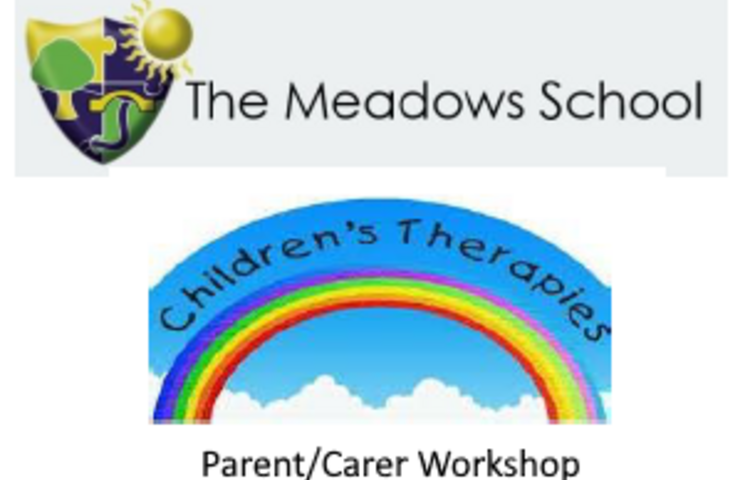Phonics & Reading

Phonics and Reading at The Meadows School
Intent
At the Meadows School, reading is a fundamental part of our curriculum and a key priority within our commitment to delivering a high-quality education for all learners.
We recognise that reading is more than a subject — it is a vital life skill that helps pupils make sense of the world, communicate effectively, and access learning across every area of the curriculum.
In our setting, reading is understood in its broadest and most inclusive sense. For some pupils, particularly those with complex or profound and multiple learning difficulties, reading may involve deriving meaning from symbols, objects, photographs, tactile cues, or sounds — not just from text.
Guided by the National Curriculum (2014) and The Reading Framework (2023), our intent is to ensure that every pupil develops their ability to access meaning — whether through conventional reading or alternative communication systems. Our curriculum is ambitious, personalised, and carefully sequenced to develop each learner’s comprehension and engagement with the world around them.
At The Meadows, reading is a shared journey between staff, families, and pupils — nurturing curiosity, communication, and a lifelong love of stories.
Implementation
Our approach to teaching reading is highly differentiated, evidence-informed, and tailored to each pupil’s needs, starting points, and communication methods.
Pre-Phonics and Early Reading Skills
For pupils not yet ready for formal phonics, we focus on developing early listening, attention, and sound awareness through:
- Recognising and responding to environmental and instrumental sounds
- Exploring rhythm, rhyme, and body percussion
- Using voice sounds
- Participating in interactive stories, songs, and sensory experiences
These early experiences build the auditory and cognitive foundations essential for future reading development.
Inclusive and Multisensory Approaches
For pupils with significant sensory or communication needs, reading involves connecting stimuli and meaning through:
- Object-based learning and Objects of Reference
- Tactile and visual symbols (e.g. PECS, symbol books, AAC devices)
- Sensory stories combining language, objects, and sound
- Structured phonics introduced when pupils are developmentally ready
This flexible, multisensory approach ensures that every learner experiences reading in a way that is meaningful, engaging, and accessible.
Staff Training and Curriculum Sequencing
Our staff receive professional development in:
- Supporting early communication and cognition
- Delivering high-quality phonics instruction
- Using inclusive literacy strategies (e.g. sensory storytelling, intensive interaction)
Curriculum progression is mapped through frameworks such as Routes for Learning, Communication frameworks, and Communication Profiles, ensuring learning is relevant, measurable, and linked to EHCP and curriculum outcomes.
Phonics
We use Read Write Inc. (RWI) — a structured phonics programme by Ruth Miskin that helps all learners make rapid progress in reading and writing. RWI supports our pupils in developing strong foundations in phonics, decoding, comprehension, and spelling, while nurturing confidence and enjoyment in reading.
At The Meadows, pupils are assessed by the Phonics Lead and grouped according to ability. Small group phonics sessions take place three times a week, delivered by trained staff. Progress is assessed termly using RWI’s online assessment system, allowing us to monitor individual growth and adjust groupings as needed.
The structure and routine of RWI provide the consistency many of our pupils need to thrive. Lessons focus on reading development first, acknowledging that writing skills may progress more slowly for pupils with fine motor challenges.
Pupils learn to:
- Recognise and blend the 44 sounds of English
- Read and spell common exception words
- Build decoding confidence through matched reading books
- Compose sentences orally before writing independently
The Five Ps of Read Write Inc.
|
Principle |
Focus
|
|
Pace
|
Fast paced, engaging sessions keep children actively involved. |
|
Praise
|
Positive reinforcement motivates and celebrates progress. |
|
Purpose
|
Clear learning objectives make each lesson meaningful. |
|
Participation |
Every pupil is involved through paired and choral activities.
|
|
Passion |
Our staff teach phonics with energy and enthusiasm that inspires children. |
We use pure sounds (e.g. m, s, t) and “Fred Talk” to support blending and decoding. Books are carefully matched to each child’s phonics level, ensuring early success and confidence as readers.
For more information about RWI, click this link to the Ruth Miskin website.
Reading for Pleasure
DEAR – Drop Everything and Read!
Every afternoon, pupils “Drop Everything and Read” for 15 minutes. This dedicated time builds excitement around reading and promotes independence and enjoyment.
We follow Professor Rudine Sims Bishop’s concept of “Mirrors, Windows, and Sliding Glass Doors” — ensuring all pupils see themselves and others represented in stories. Our booklists are diverse, inclusive, and thematically rich, exploring:
- Family and friendship
- Emotions and resilience
- Kindness and community
- Nature and our planet
- Change, loss, and new beginnings
Each term, staff use a ‘Favourite Five’ set of texts per key stage, ensuring pupils experience a wide variety of high-quality stories, poems, and non-fiction.
“All children see themselves in stories. All children are seen.”
For more information on our Reading for Pleasure plan, click here.
Impact
We measure the impact of our reading curriculum through pupil progress towards individual targets and broader indicators of communication, engagement, and independence.
Key indicators include:
- Improved attention and listening
- Greater engagement with reading materials and routines
- Recognition and anticipation of cues and symbols
- Progress in decoding and comprehension (where applicable)
- Increased confidence and motivation to read
Our ultimate goal is for every pupil — regardless of ability or communication mode — to find meaning, enjoyment, and independence through reading.
At The Meadows, every pupil is a reader. Whether through symbols, sensory stories, phonics, or text, we celebrate progress in all its forms.

